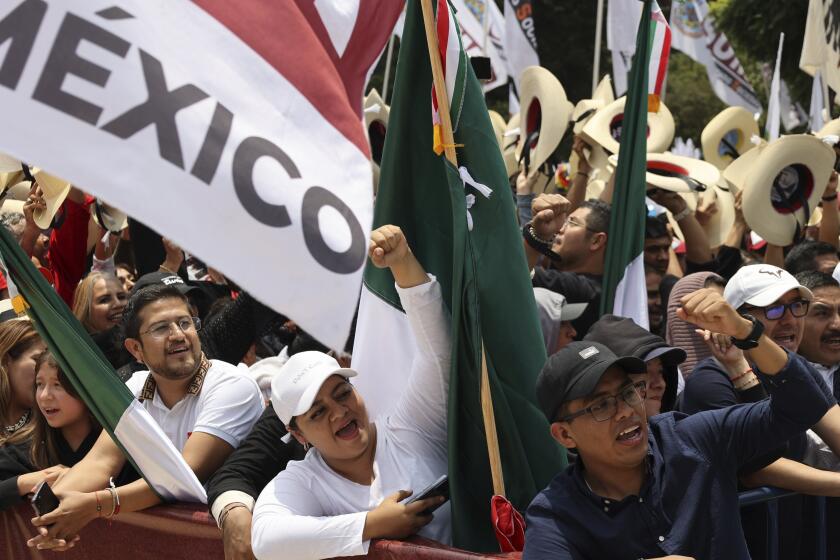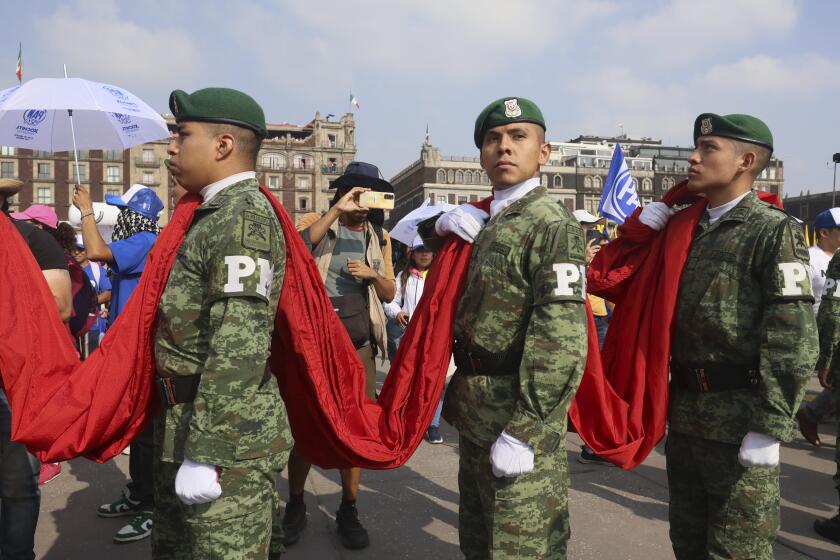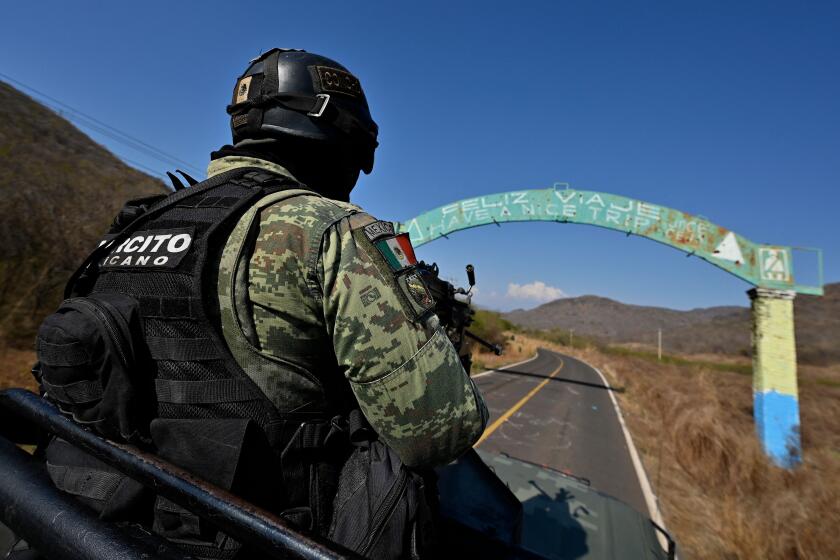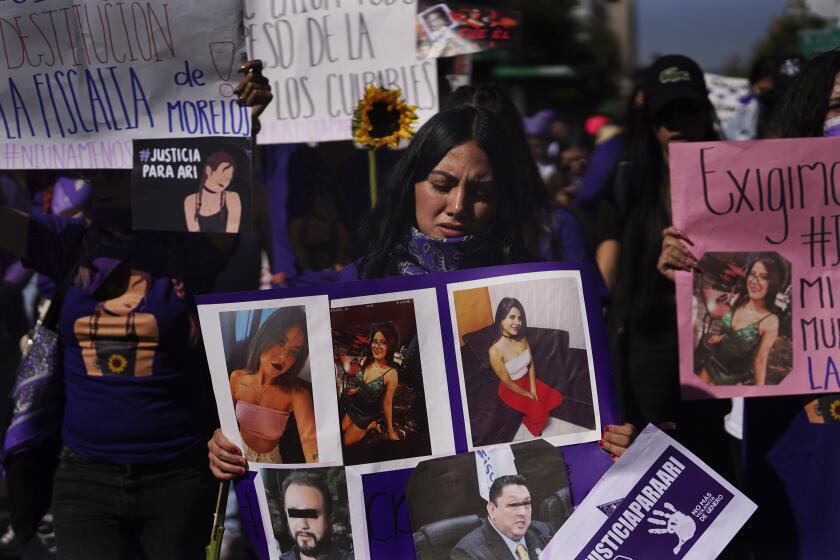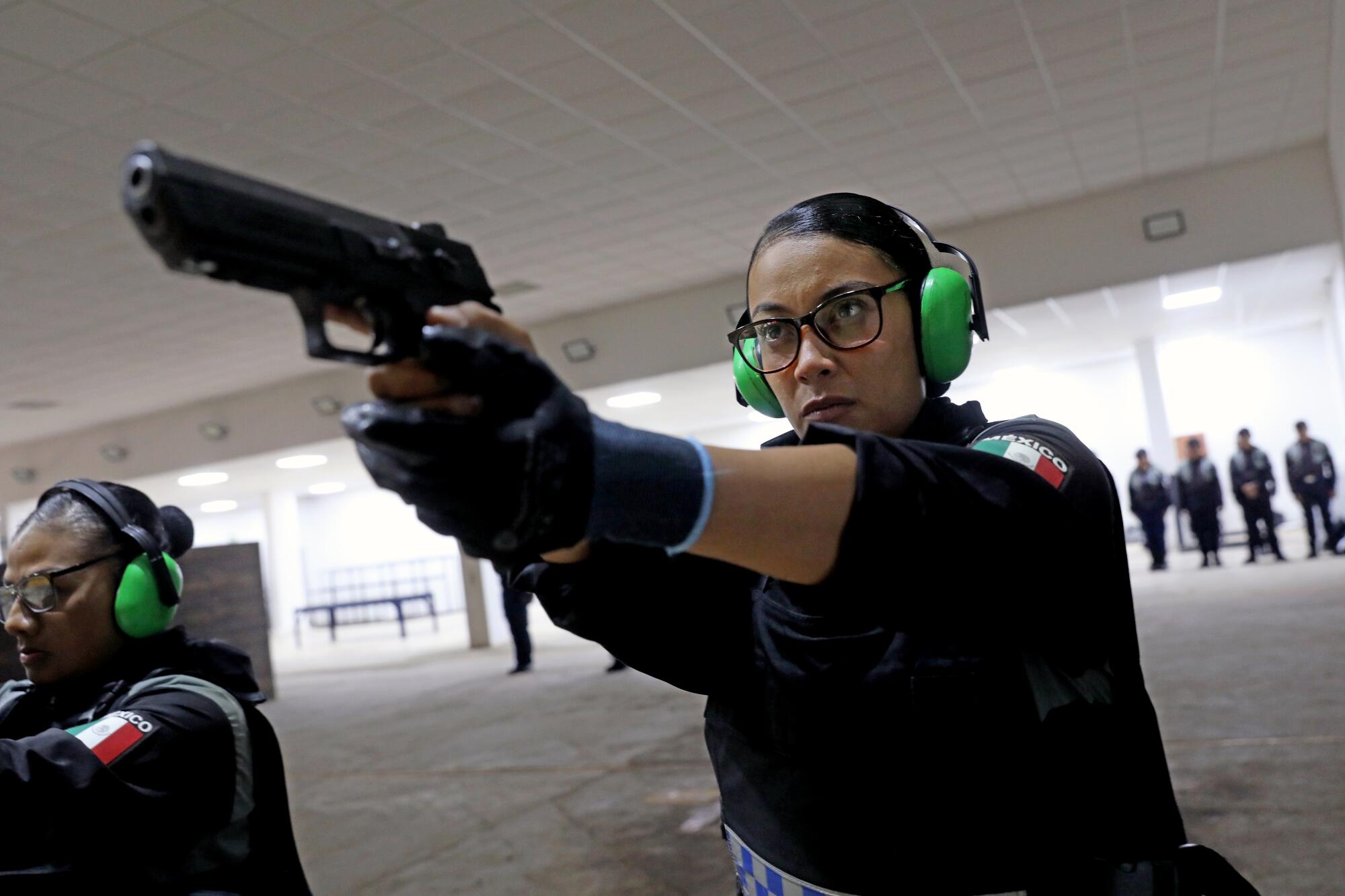
- Share via
MEXICO CITY — As mayor of Mexico City, Claudia Sheinbaum celebrated a dramatic drop in violent crime, including a 50% plunge in homicides.
Now the front-runner in Mexico’s presidential election, Sheinbaum says she is uniquely qualified to bring peace to a nation battered by nearly two decades of cartel violence. “We already did it,” she said. “Of course we will continue.”
If she wins Sunday’s election as expected, she will confront a country in crisis, one plagued by a largely inept criminal justice system, one of the world’s highest homicide rates and a dangerous patchwork of well-armed gangs that control wide swaths of territory and even some local governments.
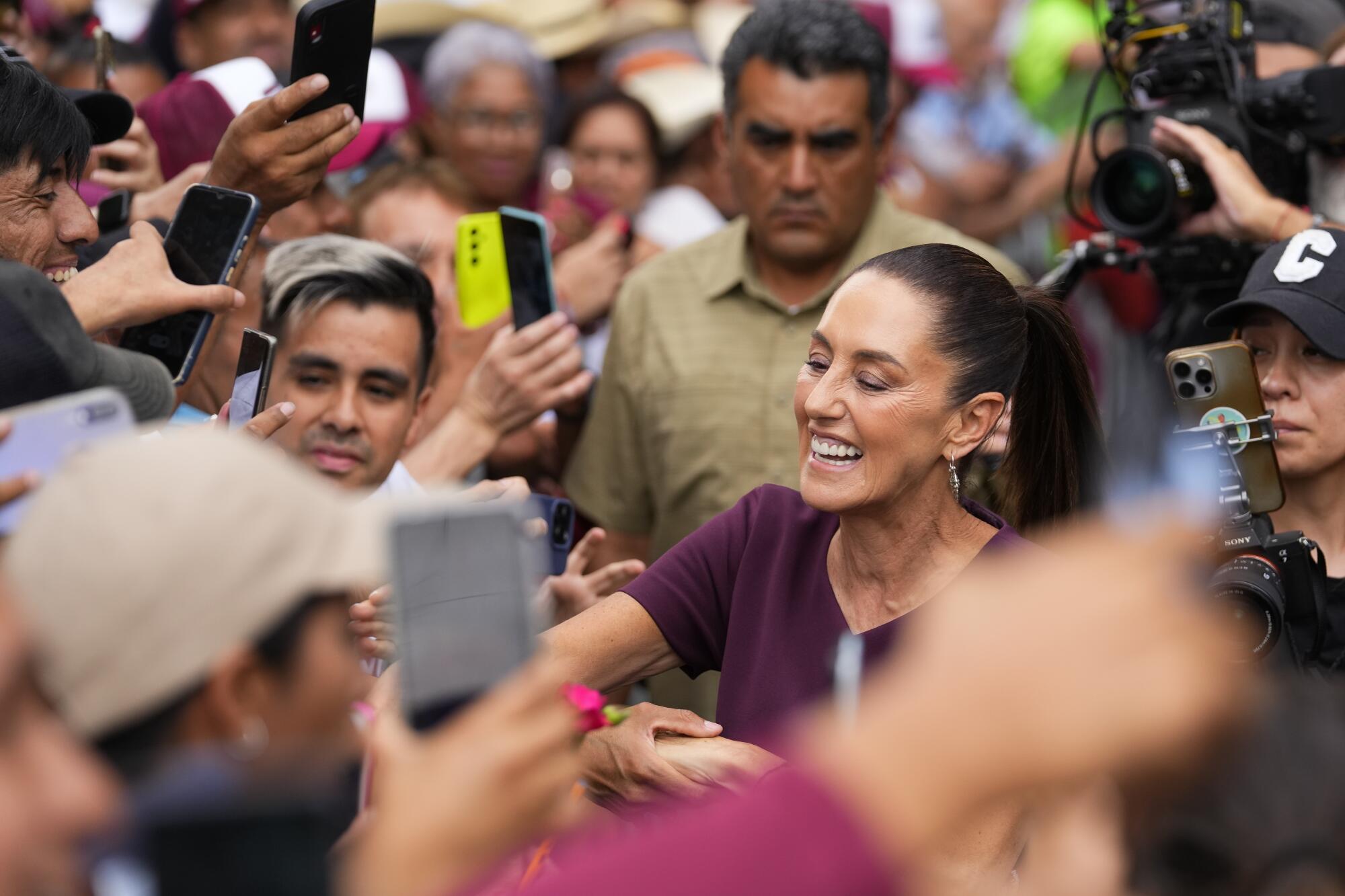
Experts say the novel security strategies that Sheinbaum embraced in Mexico City — improving investigations, professionalizing cops and implementing community policing models developed in U.S. cities such as Oakland — may be difficult to repeat elsewhere in the country, where organized crime is more violent and more deeply embedded than it is in the capital.
Her efforts to improve policing in Mexico City were also expensive — and would be costly to reproduce on a wider scale.
“The Mexico City model is not replicable,” said Carlos Pérez Ricart, a political scientist at Mexico’s Center for Research and Teaching in Economics, citing the high costs of hiring and training officers. Still, he said, Sheinbaum’s experience suggests that, if elected, she may refocus attention on improving the country’s notoriously incompetent police, a goal long sought but also long neglected by previous governments who opted instead for a top-down militarized approach.
What to know about the Mexican election: Who are the candidates in Mexico’s presidential race? What does it mean for the border and cartel violence?
“At a time when the country needs a model of nonmilitarization, the Mexico City example is useful,” Pérez Ricart said. “It says: Hey, there is another way to do this.”
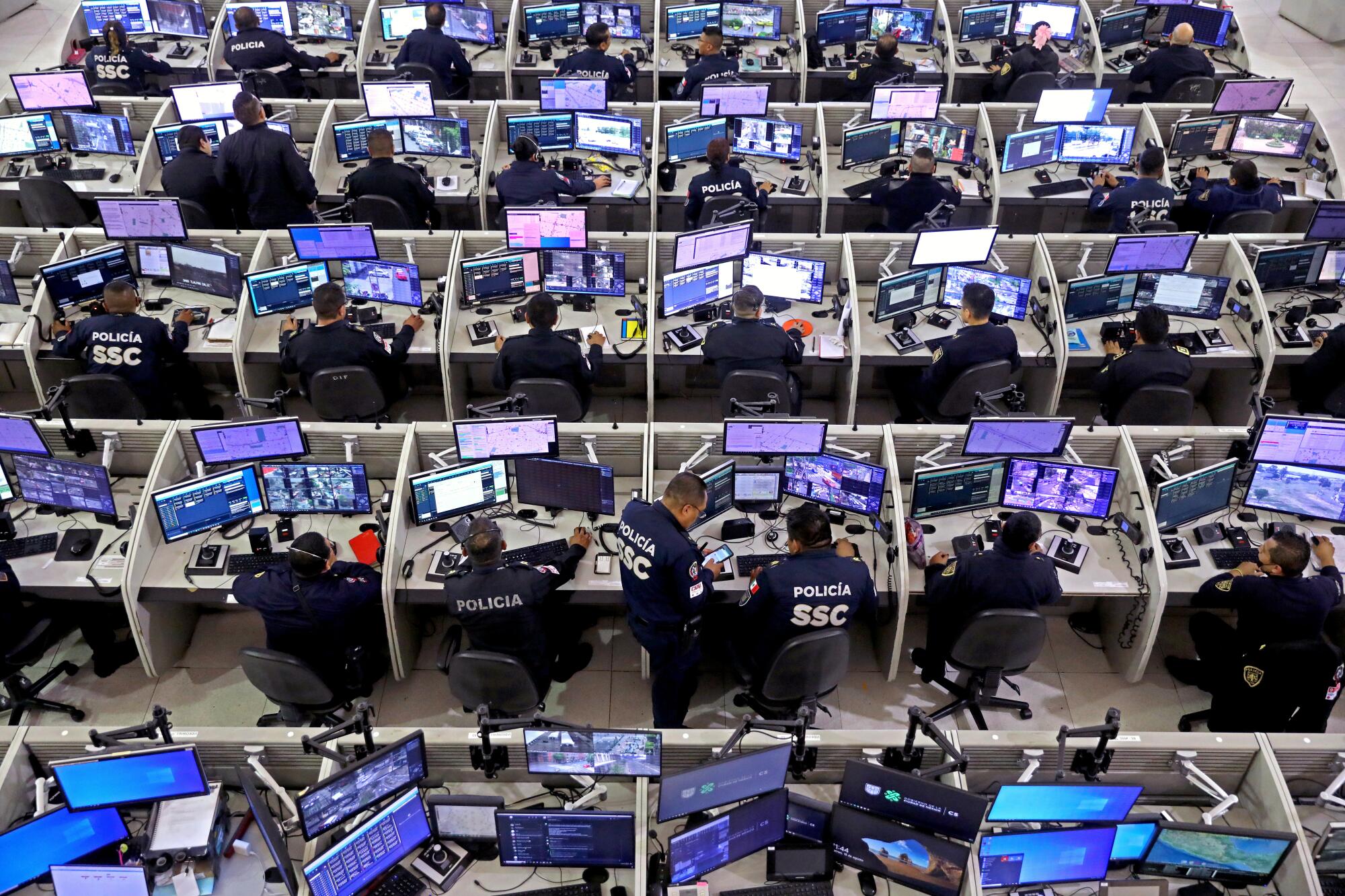
But there are many potential roadblocks, security experts say, including the legacy of Sheinbaum’s mentor, President Andrés Manuel López Obrador, who abandoned promised efforts to strengthen Mexico’s civilian police.
After taking office in 2018, López Obrador eliminated Mexico’s federal police force and slashed funding to local and state law enforcement agencies, ceding much of the country’s public security to the military, marines and the newly created National Guard.
That leaves the next president of Mexico with limited tools in the face of a gaping problem.
“There are glimmers of hope that Sheinbaum is willing to work more methodically than those in the past,” said Falko Ernst, a senior analyst on Mexico at the International Crisis Group. “But this is not an easily fixable problem, and nobody should expect it to be swept off the table anytime soon.”
More than 30 candidates have been killed before the Mexican election on Sunday, as criminal gangs and drug cartels seek more power and control.
::
When Sheinbaum was elected mayor of Mexico City in 2018, the capital was gripped by the worst violence it had experienced in years.
An average of five people were killed by homicide each day. Armed robberies were common even in the toniest neighborhoods. The outgoing mayor, Miguel Mancera, refused to acknowledge that major cartels were operating in the city even as several high-profile gang leaders were arrested here.
Sheinbaum, an environmental engineer who did doctoral research in California, came in with what her colleagues described as a systematic approach. She raised the salaries of officers by more than 50% and set a goal that half of new police academy recruits be women. She pushed a legal reform that gave the police department more investigative and intelligence-gathering powers and vastly expanded the city’s video surveillance system.
Soldiers and civilians have been killed in separate incidents in recent months involving ‘narco mines’ planted in western Mexico.
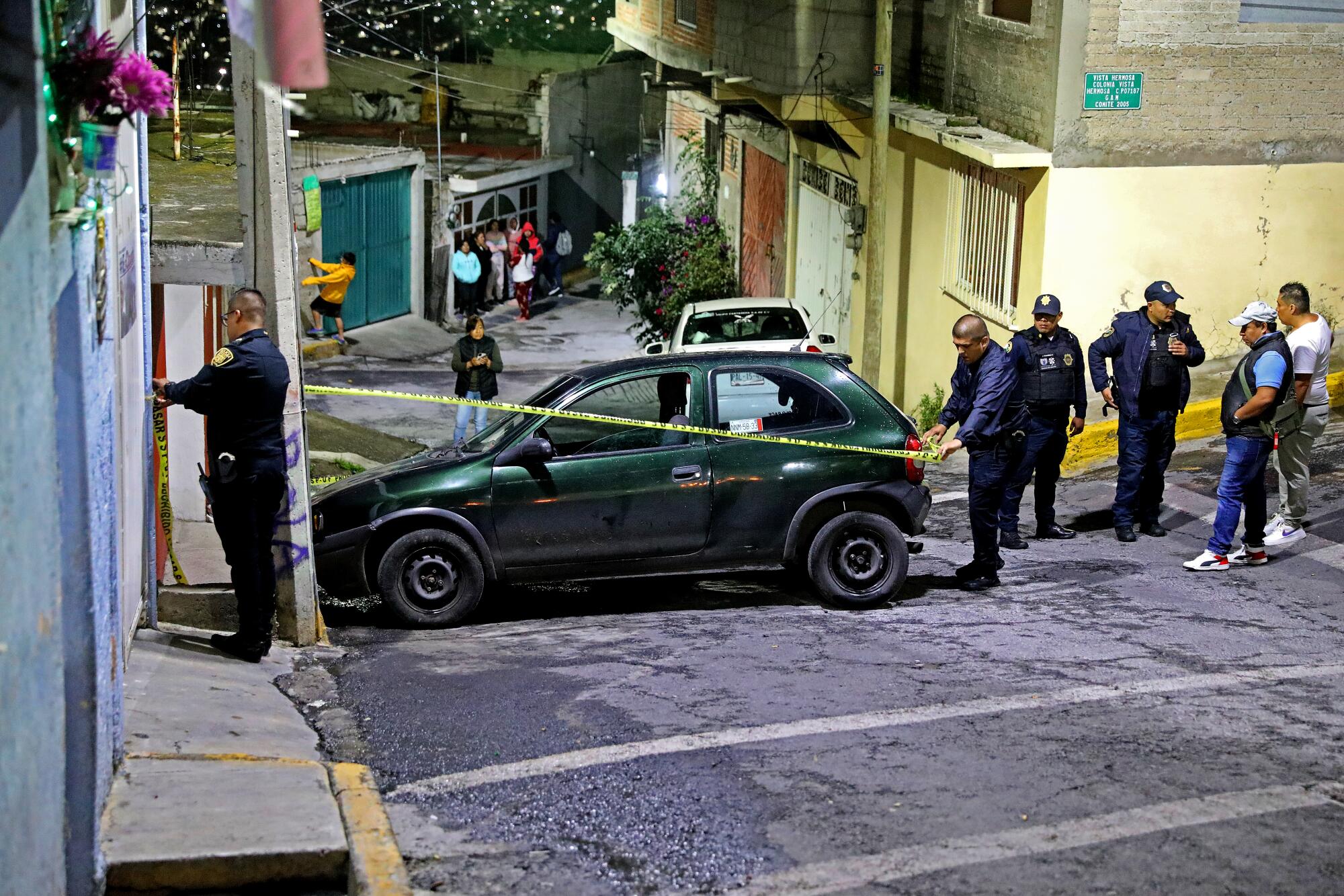
She hired Omar Harfuch, an expert in organized crime, as her police chief and adopted a slew of new policing initiatives inspired in part by visits to the U.S.
On a 2018 trip to Oakland, Sheinbaum learned about a program called Operation Ceasefire, which sought to connect social services with a small group of individuals deemed most likely to be involved in a shooting.
Police in Mexico City mimicked the program, identifying likely perpetrators of violent crimes, particularly homicides, and then sought to redirect them.
The gruesome killing of Ariadna López shocked Mexico, spurred protests in the capital and highlighted the nation’s epidemic of violence against women.
“There’s nothing that rips apart the social fabric more than a homicide,” said Pablo Vázquez Camacho, who helped oversee Sheinbaum’s social programs and who was recently named Mexico City police chief by her successor.
Inside a city auditorium on a recent morning, another program launched by Sheinbaum was on display. Dozens of young people who had been arrested for nonviolent crimes such as drug possession and theft had been given the chance to avoid jail time by attending a months-long rehabilitation course. They sat in small circles alongside therapists and police officers, discussing their upbringings, their hopes for the future and swapping techniques for dealing with sadness and stress.
Mexico’s police department said graduates of the program were five times less likely to commit another crime compared with somebody who had been incarcerated.
Her tenure was not without major violent incidents, including a brazen attack on Harfuch in 2020 on one of Mexico City’s main boulevards that injured the then-police chief and killed two of his bodyguards.
But by the time Sheinbaum stepped down as mayor in the summer of 2023 to run for president, statistics showed a precipitous drop in many crimes, including robberies and assaults. Federal data also indicated that city residents felt much safer, with the percentage of people reporting that they felt unsafe dropping from 92% in 2018 to 57% in 2023.
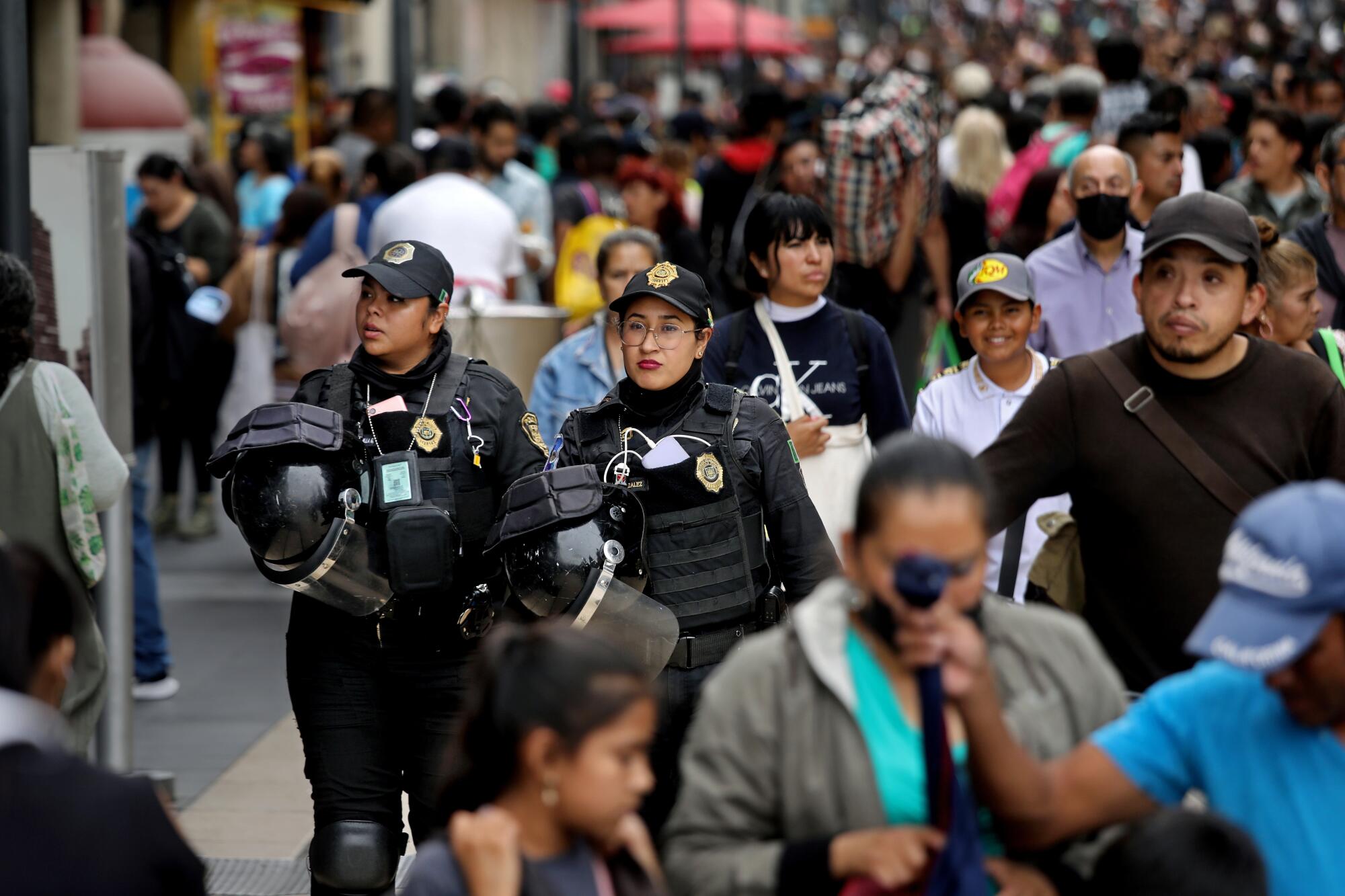
Sheinbaum celebrated a drop in homicides, which according to city data occurred just twice daily on average by then, the lowest rate since 1989. She said Mexico City was safer than many U.S. cities, including New Orleans and Philadelphia.
But the homicide data were more complicated than they appeared.
Researchers pointed out that a large number of violent deaths in the capital — nearly a third — were classified as “undefined.” Some asked whether some of those deaths might in fact be slayings that had been miscategorized in order to obscure a higher homicide rate.
Academics and journalists pounced on the topic, with many calling on city authorities to do more to define the cause of all violent deaths in the city.
But many also noted that the large number of unclassified deaths in Mexico City was nothing new — they had been recorded that way since 2011. And other data, including the decrease in assaults, did suggest that violent crime had indeed dropped under Sheinbaum, said political scientist Rodrigo Peña González.
Ernst said Sheinbaum’s team in Mexico City “did better than most other security forces I’ve seen in Mexico over the past decades, especially in being more systematic about their approaches and thinking about how to get lethal violence down in very pragmatic ways.”
But Mexico City’s police force is one of just a few law enforcement agencies nationwide that have improved in recent years, experts say, in part because it is one of the few that is well-funded. The federal government has cut the subsidies that many police departments depend on as it plows more money into the armed forces.
When President Felipe Calderon first deployed soldiers and marines to fight organized crime in 2006, they were seen as a temporary supplement to police, who in many parts of the country were viewed as corrupt and complicit with drug traffickers.
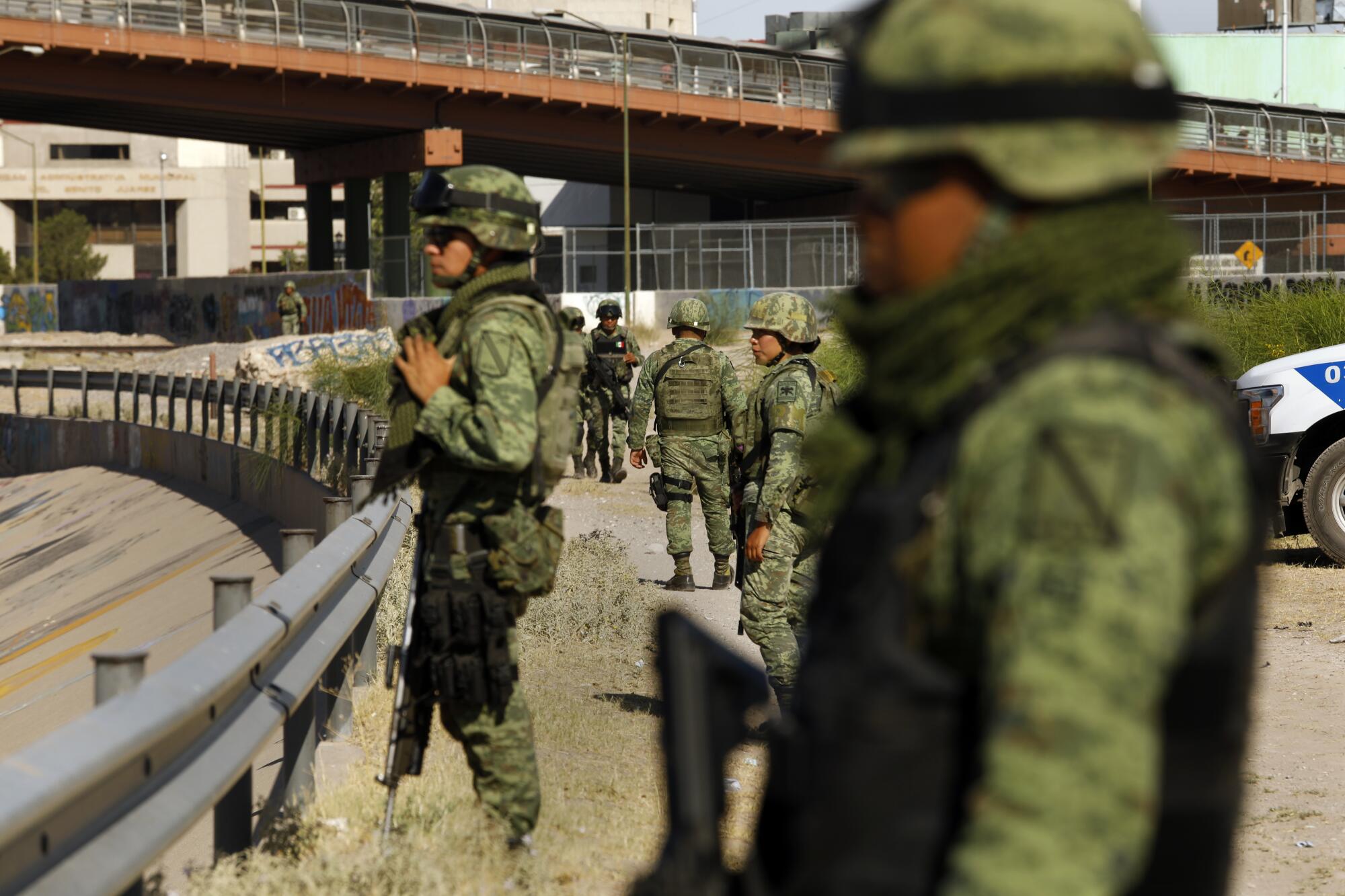
But Mexican leaders have failed to make necessary investments to reform police, prosecutors and judiciaries.
López Obrador slashed crucial federal funding for local law enforcement, forcing some municipalities to disband their police forces. The number of municipal police officers in Mexico fell 4% between 2018 and 2021, according to the National Census on State Security.
Sheinbaum, a protege of López Obrador’s for years, has studiously avoided criticizing her mentor’s security strategy. And she has offered only a vague sense of how she would tackle crime as president aside from pledging to hire more police investigators, create more social programs for poor youth and expand the National Guard.
Peña, a researcher at El Colegio de México, said Sheinbaum’s apparent success in Mexico City has been a rare bright spot in a country that has become accustomed to impunity for criminals and regular atrocities, but said she must lay out a more concrete plan for tackling crime.
“We see any sign of hope and we embrace it,” he said. “But there is no real discussion about how this could be carried out on a national scale.”
These days, experts in violence in Mexico rarely talk about how to reduce the stranglehold of organized crime, he said. They focus instead on how best to reduce the violence associated with it.
“The history of the last 30, 40 years of international drug trafficking teaches us that there is no sign that the consumption or sale of drugs will disappear, but rather that it will become more complicated and more sophisticated,” Peña said.
::
1
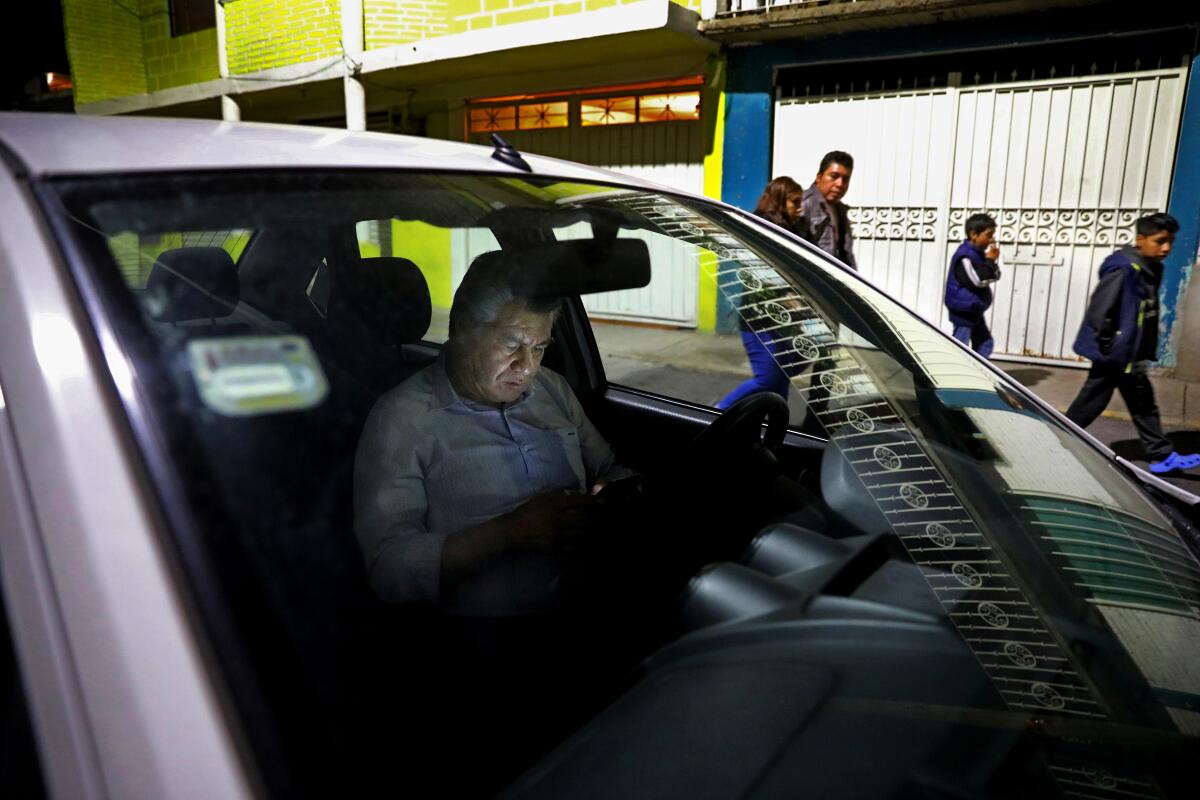
2
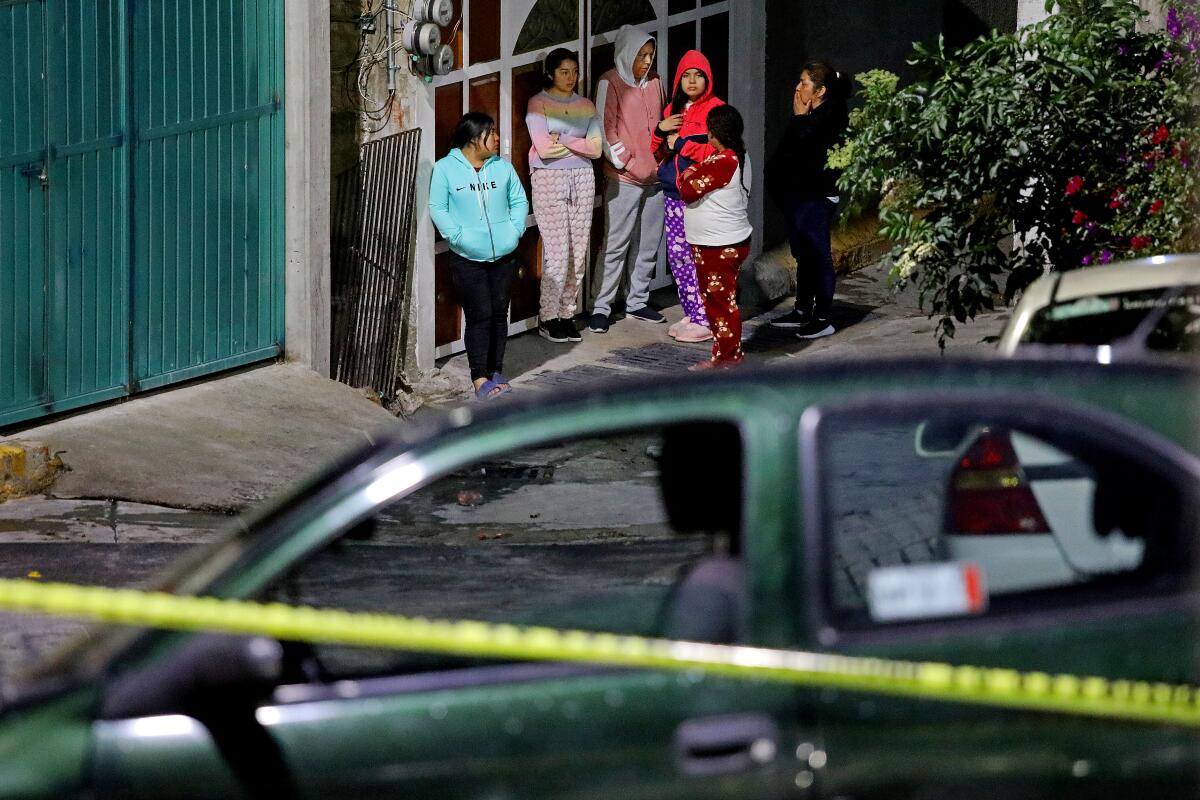
1. Jaime Llera, a photojournalist with La Prensa, files images from a Mexico City crime scene using his cellphone. 2. People gather on the street while police investigate the shooting death of a taxi driver. (Gary Coronado/Los Angeles Times)
Last month, Sheinbaum was forced to cancel a planned campaign stop in rural Michoacán state after an outbreak of gang violence there. It was — along with the slayings of more than 30 political candidates across the country this election season — a stark reminder of the vast security challenges that await her nationally if she is victorious on Sunday.
An increase in crime in Mexico City in the months after Sheinbaum stepped down is another reminder of the fragility of security gains.
On a rainy night several months after Sheinbaum left office, photojournalist Jaime Llera sped through a hilly working-class neighborhood on the city’s north side toward the street where a man had just been killed.
Llera, who has covered crime for more than three decades, smoked a cigarette while he snapped photographs of a taxi spattered with blood. The body of the driver, whom police said may have been shot to death in relation to extortion payments to a local gang, had already been removed.
Members of a nearby church stood and gaped. A man peered out the doorway of a billiard hall.
Llera spoke with several neighbors who had gathered at the crime scene. One of them, Maricella Arzate, 59, said life in the area still felt precarious. Her young granddaughter agreed. “We still hear bullets at night,” she said.
They didn’t speak highly of the police. As Llera returned to his car to send his pictures to his editors, a police officer approached. The officer had taken photographs of the body of the victim. He wanted to make a quick buck by selling one to Llera.
More to Read
Sign up for Essential California
The most important California stories and recommendations in your inbox every morning.
You may occasionally receive promotional content from the Los Angeles Times.
